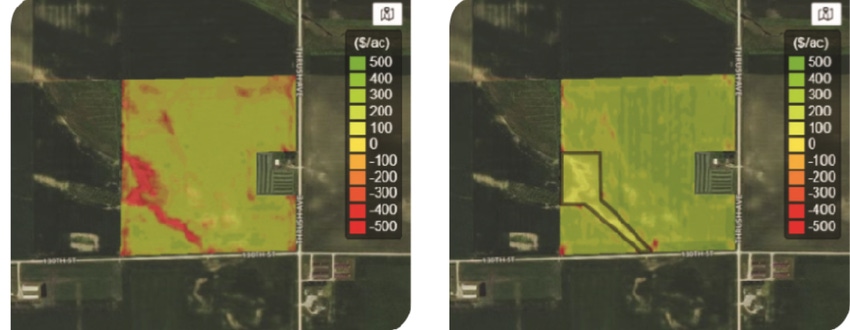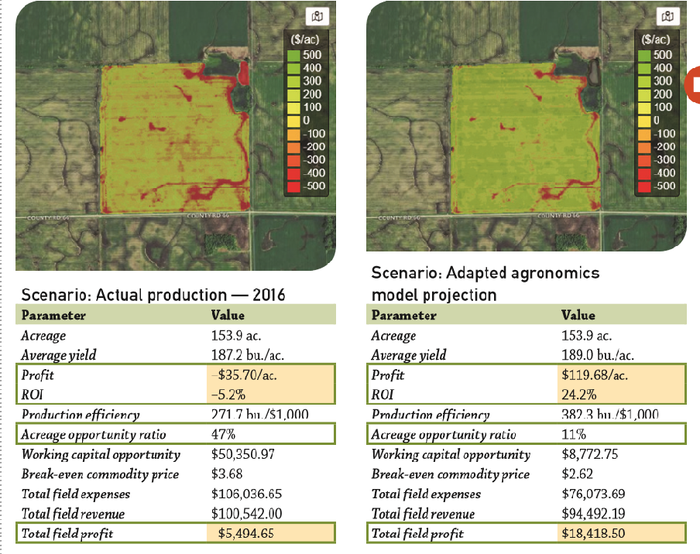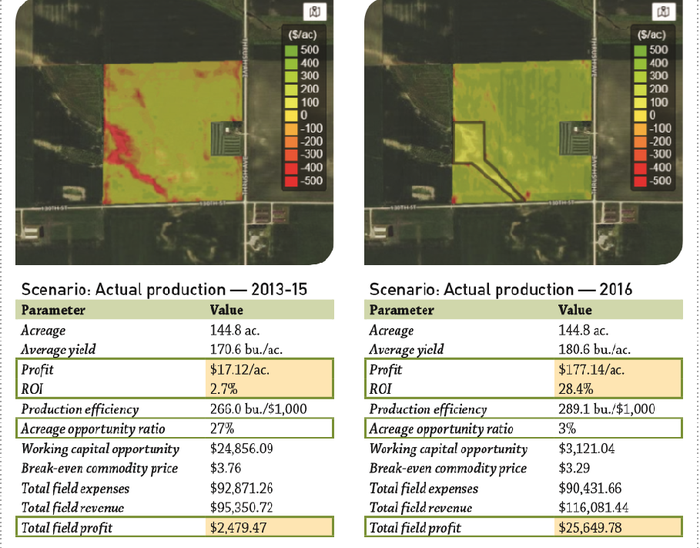August 1, 2018

While most farmers can quickly point to field locations where yields traditionally drop, fewer farmers have data that drives decisions to change poor acres. But as EFC Systems Vice President Dave Muth pointed out at Corn+Soybean Digest’s data and technology conference last winter, data can help you specifically identify these problem acres (and find others), dividing them into different businesses. See Muth’s presentation in a gallery posted on CSD’s website (go to bit.ly/JudgeAcres), where he walks through how different advisers and farmers use EFC Systems’ FieldAlytics software to compare return-on investment zones — both current and potential returns given different improvement scenarios.
Manage every acre
Fundamentally, right now farmers do not manage fields as businesses, Muth said. “It’s a challenge to realize that not every acre has revenue-generating potential, especially when we’re not collecting and analyzing the data to get us there.” Research shows that between 5% and 20% of the acres in every field are consistently not profitable, he said. “So, in Iowa, for example, it has between 2 million and 3 million acres that lose money every year. And that equals more than $1 billion in misallocated working capital.”
ROI management
Muth divides fields into three zones:
1. Revenue Zone. This is usually 75% to 95% of all fields, which is where you spend your input dollars.
2. No Cost Zone. These are areas where it makes no sense to spend input dollars because you won’t make any money.
3. Expense Limited Zone. Since revenue potential is limited, you calibrate your business model to understand how to make this area profitable. To really understand business performance at the sub-acre level — to see how independent acre “businesses” are performing — you need to pull together many diverse sets of data. Then you analyze and test alternatives in these four categories: agronomy and operations, land improvement, precision management, and alternative low-cost revenue. Muth’s presentation examines four case studies, from judging inputs under custom farming to land improvement, lease renegotiation, precision fertility zones, and alternative revenue for unprofitable field zones.
Here are a few takeaways:
• Case 1 saw a profit increase from a $36-per-acre loss in 2016 to a $120-per-acre profit in 2017, and reduced the number of acres that were losing money from 47% to 11%.

Upon analysis of data, this Case 1 scenario shows potential profit increase from a $36-per-acre loss in 2016 to a $120-per-acre profit in 2017. It also shows a reduction in the percentage of acres losing money — from 47% to 11% (acreage opportunity ration).
• Case 2 showed how to turn 15.4 acres impacted by drainage issues ($291-per-acre corn losses and $415-per-acre soybean losses) into a profit with tile — corn yields jumped from 135 to 233 bushels per acre in that area.
• Case 3 showed how a variable-rate nitrogen strategy improved profit per acre by $26 over a blanket N rate ($41 vs. $15).
• Case 4 showed how changes in cash rent, tile, split N and removing unprofitable acres caused profit to rise from $17 per acre to $177 per acre, and the acres losing money dropped from 27% to 3%. All this was achieved without trying to increase yield.

The maps above clearly show the improvement in this field. Implementing changes caused profit to rise from $17 per acre to $177 per acre, and the acres losing money dropped from 27% to 3%. All this was achieved without trying to increase yield.
To view all the details of Muth’s presentation, visit the online gallery at bit.ly/JudgeAcres.
Editor’s note: Mark your calendar to attend CSD’s third annual conference, where you’ll gain more from great data and technology case studies as told by advisers and farmers. The Farm Progress Tech Forum is Nov. 27-28 in Iowa City, Iowa.
About the Author(s)
You May Also Like






